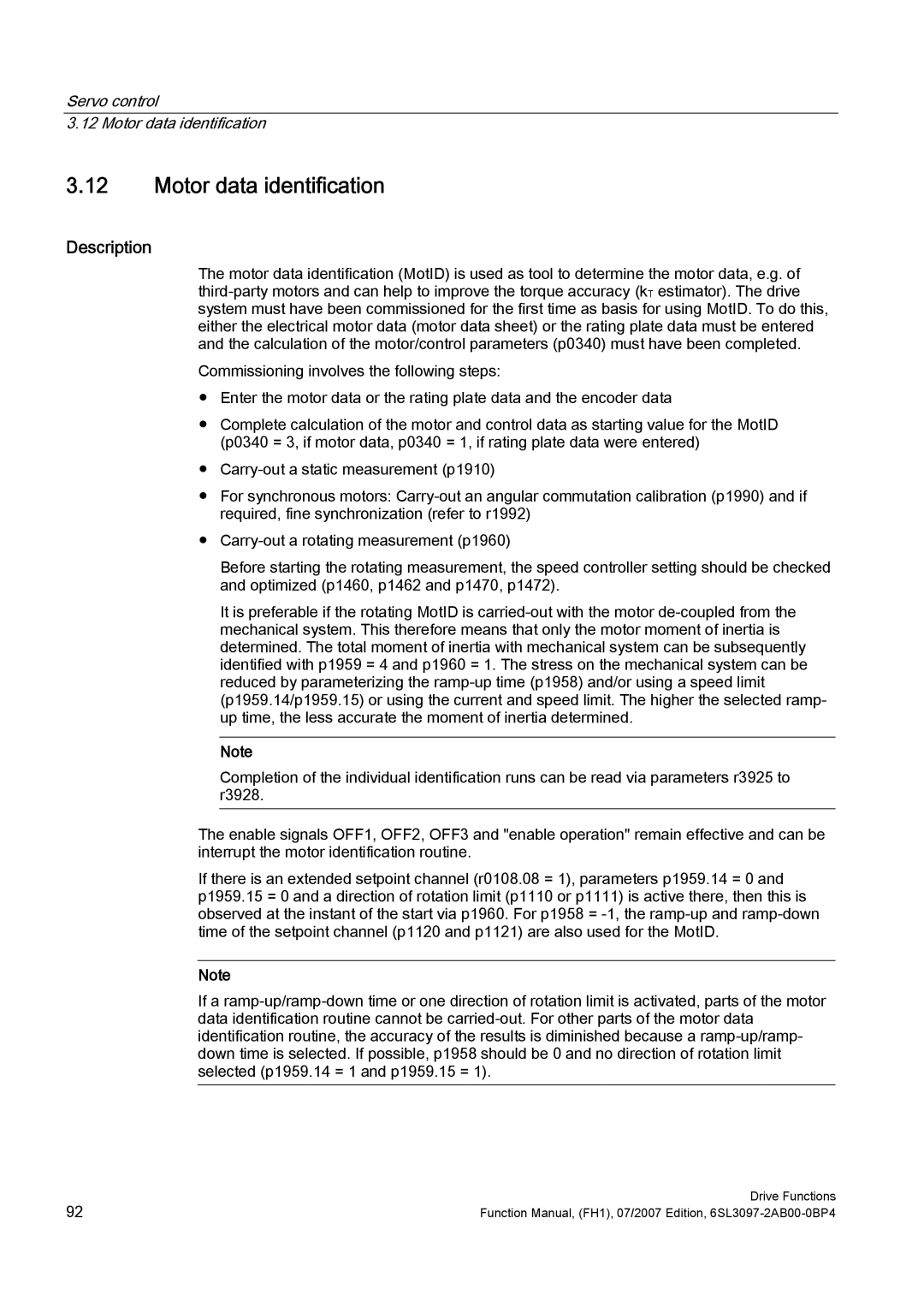
Servo control
3.12 Motor data identification
3.12Motor data identification
Description
The motor data identification (MotID) is used as tool to determine the motor data, e.g. of
Commissioning involves the following steps:
●Enter the motor data or the rating plate data and the encoder data
●Complete calculation of the motor and control data as starting value for the MotID (p0340 = 3, if motor data, p0340 = 1, if rating plate data were entered)
●
●For synchronous motors:
●
Before starting the rotating measurement, the speed controller setting should be checked and optimized (p1460, p1462 and p1470, p1472).
It is preferable if the rotating MotID is
Note
Completion of the individual identification runs can be read via parameters r3925 to r3928.
The enable signals OFF1, OFF2, OFF3 and "enable operation" remain effective and can be interrupt the motor identification routine.
If there is an extended setpoint channel (r0108.08 = 1), parameters p1959.14 = 0 and p1959.15 = 0 and a direction of rotation limit (p1110 or p1111) is active there, then this is observed at the instant of the start via p1960. For p1958 =
Note
If a
92 | Drive Functions |
Function Manual, (FH1), 07/2007 Edition, |
